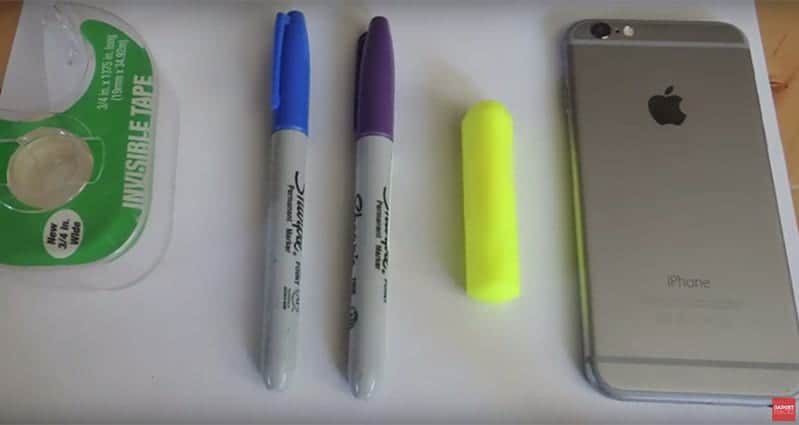
So if you ever think about paying with a fake bill, you’d better think again! In the United States, five dollar bills and above contain these fluorescent watermark strips to the left-of-center of the face of the bill.

#Diy black light portable
If you walked around all night with a portable black light, you would discover that there are phosphors all over the place. In both designs, the answer to how these black lights work is pretty much the same: the UVA light that is emitted by the bulbs react with external phosphors, and those phosphors glow so long as they’re exposed to the UVA light. The black coating essentially blocks most of the visible light aside from the blue-purplish glow corresponding to the UVA light. This coating only allows the UVA light to be emitted while absorbing the more harmful UVB and UVC light. A tube black light is similar to a fluorescent bulb with a specialized phosphor coating.An incandescent black light is similar to a standard light bulb, but it includes specialized filters that absorb most of the light produced by the bulb, except for the UVA light.There are actually two different types of black light bulbs, but both work in basically the same way: When the electron falls back to its normal level, it releases another photon, but with less energy than the original – since some of that energy was lost as heat. When a light particle strikes a phosphor, it triggers an electron to jump to a higher energy level and release heat. A phosphor is responsible for converting the invisible black light into visible light. What you’re seeing is the glow of phosphors – which is defined as any substance that emits visible light when exposed to some radiation (before you’re scared off by the word ‘radiation’, remember: all forms of light are considered radiation!). When you cast your black light over a white t-shirt, an invisible hand stamp you might get at a bar, or even your teeth, you’ll notice an intensity to that trademark purple glow. The UV rays produced by the sun that can cause sunburn are UVB the ultraviolet light produced by your average UV black light is UVA, and far less harmful. But there are actually different types of ultraviolet light, including UVA, UVB, or UVC. You’re probably most familiar with the term ‘ultraviolet light’ as it pertains to the sun and its effect on your skin. Beyond violet light is ultraviolet light – which is invisible to the human eye. The human eye is capable of seeing light that falls within a narrowly defined spectrum of wavelengths, from about 380 nanometers to about 750 nanometers, with blue and violet light being in the 380-495 range. But why? To understand that, we need to talk about the visible light spectrum… A black light bulb actually glows a blue-purplish color. When you turn on a black light in a dark room, the first thing you’ll probably notice is that the light isn’t black… at least not exactly. What Does the ‘UV’ in UV Black Light Mean, Anyway? In this blog, we’ll dig into the science behind black lights, different applications for black lights, and how you can create your own black light experiments to learn more on your own.


But I’m sure you’ve wondered, “how do black lights work?” Well, the science behind UV black lights is actually pretty fascinating.

If you’ve ever been around a black light, you may have noticed that anyone wearing white is glowing a little bit brighter – as well as anything that’s specifically made to work with black lights. When they’re turned off, black lights look just like any other fluorescent lamp – but when they’re turned on, they do something a little bit different! From Halloween parties and groovy dorm room posters to science museums and crime scene investigation television shows, you’re probably familiar with black light technology.


 0 kommentar(er)
0 kommentar(er)
